Millions of people set out to write memoirs every year, and most of them fail. Memoirs are hard to write and even harder to sell to publishers and readers, yet millions of readers buy, read, and enjoy them every year.
How do you write a memoir worth reading?
To help us answer this question, we’ll be talking with Susy Flory, a New York Times bestselling author who’s helped write numerous memoirs. She directs the West Coast Christian Writers Conference, and her new endeavor is Everything Memoir.
Thomas Umstattd, Jr.: How did you get started writing memoirs?
Susy Flory: I did not start out to write memoir, and I really didn’t even know what it was.
I was already writing books when I happened across a dog story that I fell in love with. When I was reading the story, literally, the hair on my arms stood up, and I thought, I have to write this book. So, I tracked down the guy connected with this dog story. I found his website, emailed him, and said, “Have you ever thought of writing a book?”
That’s how I started with memoir, collaborative writing, and helping others write their stories. It was a cold call.
Thomas: That book did well in the market, if I remember correctly.
Susy: Yes. It was about a guide dog who helped a blind man escape the World Trade Center on 9/11.
Thomas: That’s an exciting story, and it makes an important point. One important element of a memoir is that it can’t be a story about any dog. It has to be a story about a special dog.
Susy: Yes. It was a very special dog on a very special day with a very special man. Those three big hooks got my attention.

Why are memoirs so hard to write and sell?
Thomas: Most of us are not writing about a dog who escaped the World Trade Center. So, what makes writing memoir so difficult?
Susy: The hardest thing about writing memoir is separating the idea of autobiography, which is writing the history of your life and including all the important details, from making that into a compelling story a reader can’t put down. That’s the idea of memoir.
Thomas: A memoir doesn’t begin at the beginning of your life: “When I was two years old, I first learned to walk.” That’s a mistake because that’s not what most people are looking for in a memoir.
Susy: Yes. I’m not saying you shouldn’t write that long and detailed history because your family and people who are interested in your entire life might want to read that, but most people want to get to the good stuff.
Skip over the two-year-old stuff, or return to it in a flashback if it’s crucial. When writing a memoir, you want to think more like a novelist than a typical nonfiction writer. You want to create a story that a person stays up all night to read.
Thomas: If you want to write a successful autobiography, the first step—especially if you want it to be a runaway bestseller—is to get elected President of the United States. Historically, presidential autobiographies have been among the best-selling books. For example, Ulysses S. Grant’s autobiography was one of the best-selling books of the 1800s, at least during one of those decades. Unfortunately, it didn’t sell soon enough to prevent Grant from dying in poverty, but his children lived well off the proceeds.
Autobiographies work so well for historical figures because people are genuinely interested in their lives. These autobiographies weave personal histories into the broader tapestry of significant events, which historians and history enthusiasts find compelling. However, it’s important to understand that historians might not be interested in your story unless you are a president, governor, or some other notable historical figure. While that may be difficult to accept, it doesn’t mean you can’t still make your story interesting.
How can you make your memoir interesting, and how do you structure it?
Susy: Throughout most of my career, especially after I started focusing on memoir and personal storytelling, I have consistently taken fiction classes. I would attend writing workshops and conferences, sitting alongside novelists. Although I sometimes felt like an imposter, I learned invaluable lessons about crafting scenes, writing dialogue, developing compelling characters, and creating immersive worlds.
The setting is crucial when writing a memoir. You want to firmly anchor your story in both time and place. A common mistake I see is that memoir writers often stay too much in their own heads, focusing solely on their feelings. While there’s nothing wrong with exploring emotions or discussing what God has done in your life, it’s essential to ground those reflections in an external story.
To do this, you must work on your craft. You can’t just write down what happened to you, what you overcame, or what you survived and expect others to be automatically interested. You need to invest time in crafting a truly engaging story.
How do you find that interesting story?
Thomas: How do you get out of your own head? How do you find that interesting story that’s not merely feelings you have about what’s going on in your life?
Susy: First of all, you go to therapy because you can talk about all of that stuff with your counselor, spiritual director, or a really great friend or mentor. That’s the person you can tell all the stuff to. It doesn’t need to go on the page. If you want to write it all down, just realize that’s only the first step of your memoir.
You need to have the mindset that you are not your memoir, your story, or your book. You’re actually creating a work of art. Once you accept that you are creating something, you can take a step back, be objective, and write something amazing that people want to read.
Thomas: That’s where somebody like you is helpful because you have that outside perspective. You help others write memoirs about their lives, but have you written a memoir about your life?
Susy: Yes. My second book was what’s called a stunt memoir.
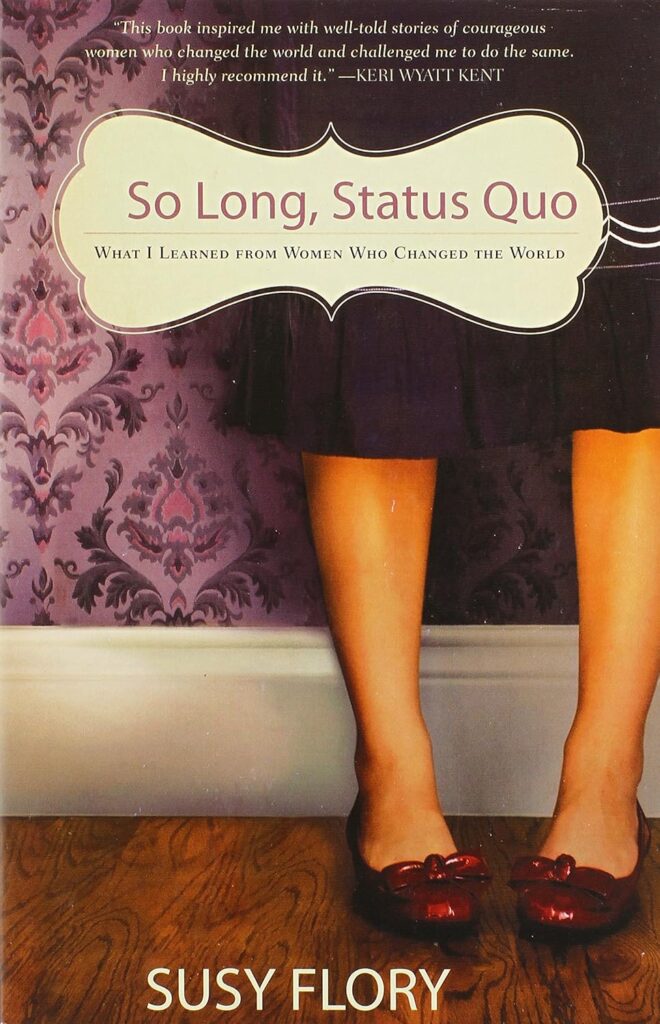
I was studying women who changed the world, people like Eleanor Roosevelt and Elizabeth Fry, who reformed the prison system in England. For each of the nine women I was writing about, I did something to try to learn more about them and experience their lives. When I was writing about Rosie the Riveter, a real woman from Kentucky, I went to a welding shop and learned how to weld.
Thomas: One of the patrons of my other podcast, Novel Marketing, has a stunt memoir in which he and his wife went to a different church every week for 52 weeks and then wrote about what he learned about Christianity as he got outside of his own bubble.
That’s a very reproducible stunt, but it’s a far more interesting way of constructing a memoir than simply expounding thoughts about Christianity and why people need to get out of their bubbles. That would not be an interesting book. Curiosity about other churches is a far more interesting premise.
What are some other kinds of memoirs?
Prescriptive Memoir
Susy: The prescriptive memoir is very common in the Christian publishing space. It’s much like a self-help book. If you’re a bossy person, like a natural-born teacher, speaker, or influencer, and you lead and influence other people through programs, teaching, and speaking, a prescriptive memoir might be for you.
In a prescriptive memoir, you’re actually using elements of your life, story, and experiences, but you’re packaging those as mini memoirs, like anecdotes, and then using them in your nonfiction book. If you pitch an agent or editor a prescriptive memoir, they may be more likely to listen and be interested, especially if you’re not famous, which is most of us.
Thomas: But even if you are famous, sometimes a prescriptive memoir is the better approach.
A good example is the book Is That Really You, God? by Lauren Cunningham. Lauren Cunningham founded YWAM, one of the largest mission organizations in the world. He could have easily said, “I’m the founder of this famous missions organization. Here’s my autobiography of what I did growing up.” But he didn’t structure the book that way.
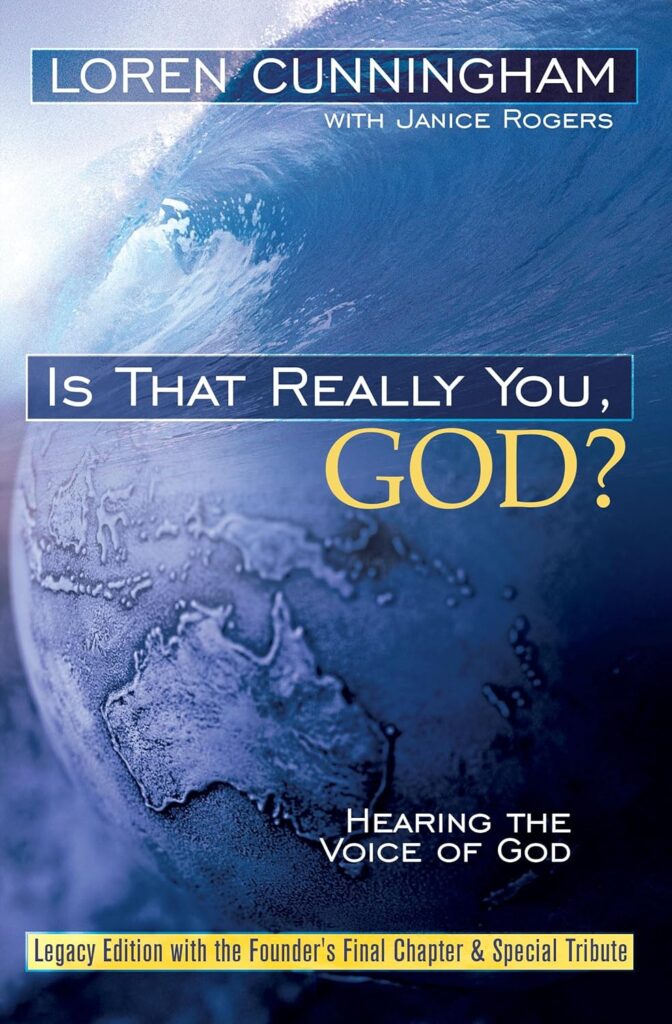
Instead, the book is all about listening for God’s voice and how to tell what God is saying to you. He teaches readers how to recognize the lies of the enemy and how to look to Scripture for God’s true voice. Through all that, he works in his story so that by the time you finish the book, you know exactly how YWAM was founded. That book sold hundreds of thousands of copies, far more than it would have if it had just been the story of Lauren Cunningham. YWAM is big, but it’s not that big. Lauren is famous, but he’s not that famous. Yet the appeal of learning to hear God’s voice is very broad. Many Christians are asking, “Is that really you, God?”
Susy: I’m currently working with someone who wants to write a memoir, and she’s resisting the idea of a prescriptive memoir. But for me, it makes a lot of sense. It’s a lot more practical, and it’s easier for readers to grasp the information.
In classic memoir, you don’t really share principles. You’re depending on the reader to pick up the principles as they’re woven into the story.
Thomas: Unless you’re Benjamin Franklin, who couldn’t help himself. He gets a little preachy in his autobiography.
Many people resist prescriptive memoir because they want it to be all about them. However, they don’t articulate it that way. They usually say, “God has called me to write my story to encourage others.” I can’t tell you how many times I’ve heard an author say that. Most often, I hear it from people who’ve experienced some kind of trauma, whether it be sexual or emotional abuse, or they’ve gone through some difficult season in their life, like adoption, fostering, or losing a loved one. Those stories are powerful, but they’re not weird enough.
For example, even if you decide to climb Mount Everest, you will not be the first one. Many people have done it.
On the other hand, if you’re an astronaut who had an encounter with God while walking in space, that would be more unusual. Prescriptive memoir requires you to have a servant’s heart because it requires you to think more about your audience and their questions, struggles, and pain, and it forces you to be more overt about connecting your story with those pain points.
Susy: It requires you to leave your office, get away from your desk, and start talking to people to understand their needs.
The best prescriptive memoirs come from people who are teaching and working with groups of people regularly. That’s how you know how to help those people, but it takes a lot of work.
Thomas: It’s why pastors and counselors have an advantage in Christian nonfiction. Many of the successful nonfiction books are written either by a pastor or counselor. Since they have more contact with real Christians and their real problems, they’re more aware of how to help.
Transformational or Spiritual Memoir
Susy: The transformational or spiritual memoir is also common in the Christian publishing world. They’re typically about someone who has had an encounter with God; maybe it’s a salvation experience, a powerful spiritual epiphany, or a release from addiction. It’s a more traditional structure where the person climbs a hill, and when they get to the top, they have the mountaintop experience with God. Those are powerful stories, and almost every Christian has one, so those are very common in the Christian world.
Fish-Out-of-Water Memoir
Susy: A fish-out-of-water memoir is about someone who voluntarily leaves their familiar environment or is suddenly plucked from an environment and put into a totally alien, unfamiliar environment. Those stories fascinate people because they haven’t had that experience and probably never will. For example, someone may sell everything they have and move to Haiti to start an orphanage and save children.
Thomas: I think that is the secret behind the book Moby Dick. Moby Dick is not that interesting. The plot is really plodding. It has allegory and literary devices, but I think the real appeal of Moby Dick, and the reason it’s been so commercially successful is that it allows you to experience life on the high seas.
The author of Moby Dick had been a whaler himself. When he’s describing life on the ship, it’s not based on research; it’s based on years of first-hand experience. Being on a boat for three years with the same small group of people is a very different kind of life.
Susy: I recently talked to someone who, along with her husband and family, spent years traveling around the country in an Airstream trailer while homeschooling their children. I would categorize their story as a travel narrative, highlighting someone doing something highly unusual.
The other key to this kind of memoir is reconstructing that environment with immersive details and imagery. That means you must work on your craft because you want to make that place come alive. When I wrote a book called Miracle on Voodoo Mountain about a young woman who moved to Haiti, I went to Haiti because I couldn’t conjure that up without going there. It’s unlike any other place on the planet. I’m not sure I ever want to go back, but I had to go there to get the smells, the feel, the sights. It’s like a different planet.
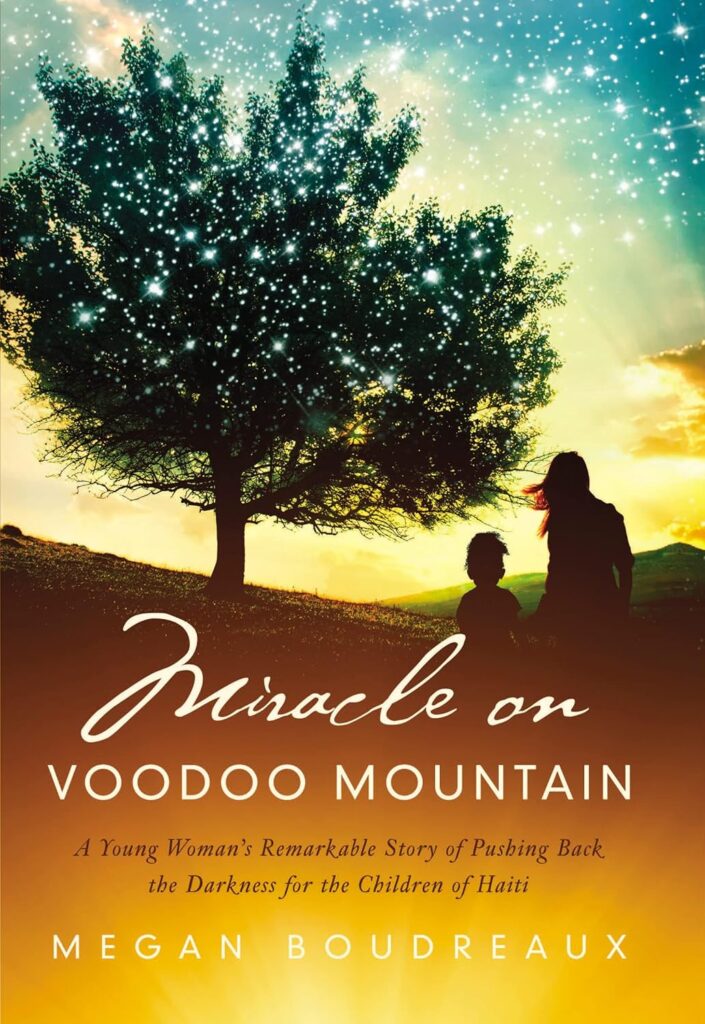
Thomas: You can also combine these different types of memoir.
I recently read a memoir that a relative of mine, a businessman, almost insisted I read. He handed me the book Adventure Capitalist, saying, “You’ve got to read this.” The book is about a venture capitalist who embarks on an epic journey, driving the same car through every country in the world. It’s a stunt, yes, but also a travel memoir.
What made it particularly interesting was that it was also prescriptive. The author describes his adventures and delves into each country’s business environment, discussing whether or not he would invest there. This gives a totally different perspective on the countries he visits—beyond that of a mere tourist. He breaks down the business laws, evaluates whether the country is on the rise or decline economically, and explores the causes behind these trends, all while navigating challenges like sneaking across borders and driving through war zones.
It’s an exciting book—not a Christian one, but an engaging memoir, nonetheless. It didn’t really feel like a typical memoir to me because the stunt and prescriptive elements were so strong. It was more about understanding the world from a business perspective, and the book definitely delivered on that promise.
Classic Memoir
Susy: Classic memoirs are by people who have had a very unusual or surprising life. Educated, by Tara Westover, was a huge bestseller in this category. She was raised by survivalists, on a mountain and never went to the doctor or to school. Her parents were very odd.

If people are fascinated by the way you grew up or by something you did in your life, that would be more of a classic memoir. It doesn’t usually fit into those other categories. It’s just highly unusual, very quirky, very unique, and people are dying to read about it.
Thomas: If you’re not being invited to talk about your story on Oprah or the equivalent, your story is probably not weird enough to count as a classic memoir. We all had weird lives and quirky parents in one way or another. But you’re talking about next-level quirkiness that happens to one in ten million people.
Susy: Another great example is Anna LeBaron, who wrote The Polygamist’s Daughter. She was one of 50 children fathered by the same man. Her father turned out to have a very interesting goal in life, and his story involves crime and prison. But her story of growing up in a polygamist family she didn’t choose is an amazing, classic memoir.

Thomas: Classic memoirs often come out of trauma. Would you put celebrity memoir into this category?
Susy: No, I wouldn’t. Anna LeBaron and Tara Westover are not celebrities. Memoirs about movie stars or celebrities would be considered public or professional memoirs.
Public or professional memoirs are written by people who are famous for various reasons—whether they are public figures, civil servants, or reality TV stars whose lives are widely known. These incredibly famous individuals can write their memoirs however they choose.
However, it’s important to recognize that this type of memoir is in a category of its own. For example, looking at Kim Kardashian’s memoir and deciding to write your own book in the same way wouldn’t be effective because, unlike her, no one is interested in every detail of your life or your makeup routine.
An example of a professional memoir in this category is Shoe Dog by Phil Knight, the founder of Nike. Because of Nike’s global recognition and the fascinating story of how Knight created innovative running shoes—starting with a waffle iron—people are naturally curious about his journey. This is what defines a public or professional memoir.
Thomas: I’m a huge fan of memoirs in this category. There was a time when I listened to nearly every memoir by a CEO that I could find. I was particularly intrigued by CEOs or corporate leaders who had experienced failure and what they learned from it.
While there are many memoirs, like the Nike book, where leaders celebrate their successes, it’s less common to find books that delve into the challenges and failures. One example is Me, Myself, and Bob, which tells the story of the rise and fall of Big Idea Productions.
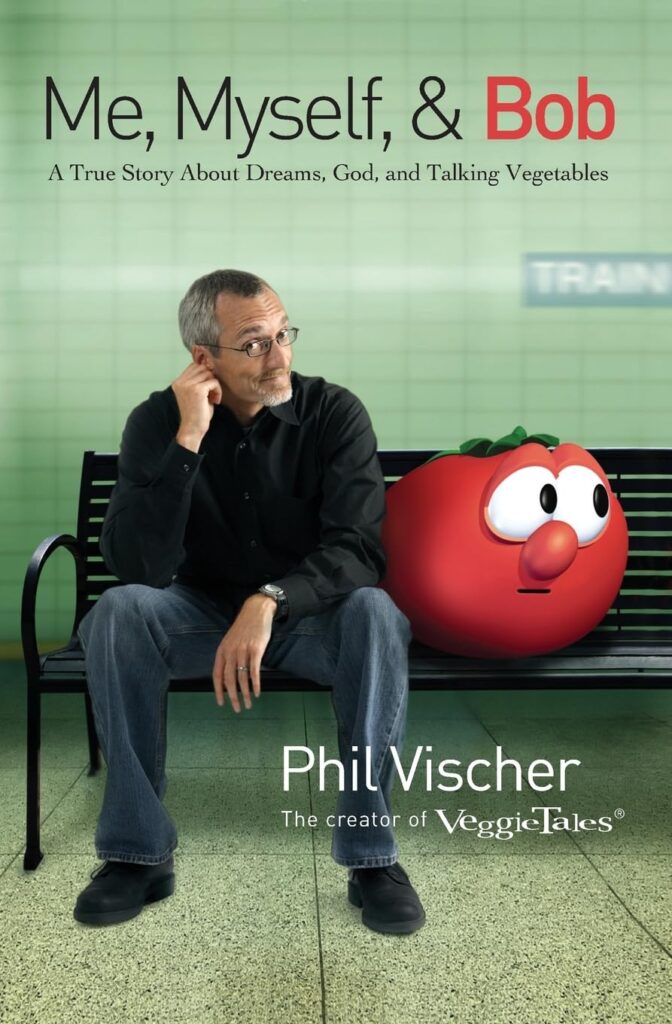
Susy: That’s a fabulous book.
Thomas: This book inspired me to seek out other books about failure. I find business memoirs particularly compelling because they reveal insights that you don’t typically get from “how-to” books. For instance, Good to Great by Jim Collins doesn’t delve into the personal lives of CEOs.
One thing that stood out to me is the common story of CEOs hitting their mid-40s, going through a divorce, and remarrying. I wanted to learn how to avoid that kind of personal turmoil in my own life. I didn’t want to end up with a broken family, which is why these business memoirs resonated with me so strongly.
Episodic or Devotional Memoir
Susy: Devotional memoirs are a genre largely specific to Christian publishing, but they hold a significant place in the market. Many Christians regularly read devotional books, making it an evergreen category. These books often include elements of memoir, weaving personal stories into their spiritual reflections.
For example, our friend Jeanette Hanscom wrote Suddenly Single Mom, a devotional for moms who find themselves unexpectedly single. While it’s structured as a devotional, it’s really the story of her divorce and how she navigated life afterward. This approach is a great way to write a memoir without attempting to turn an everyday experience into a classic memoir. Divorce, while painful and life-changing, is unfortunately not uncommon, and this format allows for sharing personal experiences in a way that’s relatable and meaningful.
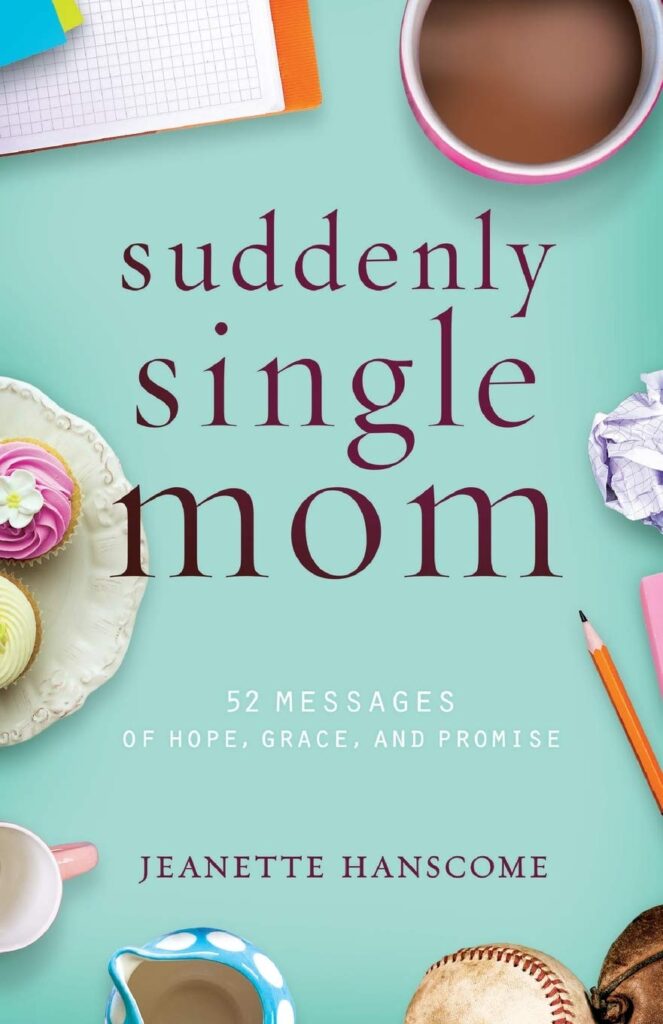
What mistakes do Christian authors make when they’re writing their memoirs?
Failure to Hone Their Writing Craft
Susy: Failure to put in the work is the number one problem. Because of self-publishing, it’s so easy to publish your book, so people just write down things straight from their journal and don’t create any sort of structure. They don’t get any distance from it or any feedback on it. They may have a copy editor look at it, but they put out something that no one wants to read except for maybe their five best friends and family.
Thomas: If that’s your goal, that’s fine. But the problem is that oftentimes authors expect to become bestselling authors with a book that they haven’t put much work into.
Just because God has called you to do something doesn’t mean he hasn’t called you to do the work. In fact, it’s just the opposite. If he calls you to do something, he’s calling you to do something, which means you have to actually do the work. It’s more than just writing down the words. It also means developing your craft.
I love Susy’s approach of studying fiction because the tools of fiction are the tools of good memoir. You must know how to structure a scene, write dialogue, communicate the setting and structure the story. You have to set up the tension so that it causes people to keep reading.
Keeping the Story Internal
Susy: Another common mistake many writers make is that they tend to focus too much on either the internal or external aspects of a story. Writers who are more comfortable with internal stories will share every thought and feeling, describing how they felt at every moment. While this can be powerful, it can also become overwhelming if not grounded in a specific time and place.
On the other hand, those who focus on external stories often resemble dry historians. They meticulously record every fact, date, and event, but their writing can be dull because it lacks the emotional depth needed to connect with the reader.
To write a truly compelling memoir, you must balance both the internal and external elements of the story. Being aware of this balance is the first step. Understanding which approach comes more naturally to you and which one needs more attention will help you create a well-rounded narrative. A great memoir effectively blends both aspects.
Thomas: In fiction, you have pantsers, people who write by the seat of their pants, and plotters, people who put together a really good plot before they write. Authors become better writers when they’re able to learn the method that isn’t their default. If they’re naturally a pantser, learning plotting and structure really improves their writing.
People who typically have strong structure and then lean into the more improvisational writing also tend to improve.
What are some myths about writing memoirs that you want to debunk?
Susy: The most common myth about writing a memoir is the belief that you need to tell your entire life story. In reality, the art of memoir lies in knowing what to leave out. Making strategic choices with your reader in mind is crucial, but it can be challenging for memoir writers.
Many people are eager to share their story exactly as they experienced it, but it’s important to understand your audience and what will resonate with them. Read other memoirs similar to what you want to create, and think about the readers who enjoyed those books. Consider even having some of them read your work to ensure you’re not including unnecessary details that might bore your audience.
The ability to leave things out strategically is essential, and while it’s difficult, it’s key to crafting a compelling memoir.
Thomas: Often, people want to leave out the most important bits because they’re afraid of offending a family member. But often, it’s that family member they’re afraid of offending who has the most interesting aspects of the story.
How do you navigate the angry mom problem?
Susy: People love being written about, even if the portrayal is negative—they might not even perceive it that way. The key to writing a memoir that includes people you know is to avoid assigning motives to them. Don’t label them as crazy, psychopathic, or dishonest. Instead, focus on creating powerful scenes that allow the reader to see what’s happening. Trust your readers to be smart enough to draw their own conclusions.
Remember, the people you’re writing about have their own reasons for their actions—they never see themselves as villains. In fact, a villain rarely thinks they’re the villain. Your role is to tell the story as you experienced it—just report the behavior, the words, and the events as if you were an observer. More often than not, the person you’re writing about will be pleased to be included, even if the portrayal isn’t entirely flattering.
It’s rare for someone to ask to be removed from a story. If they do express discomfort after reading the section about them, there are a few ways to address it. You can change their identity by altering names, gender, or other details while still keeping them in the story. You can also make their identity more general. There are plenty of ways to protect someone’s identity while still telling your story.
Another thing you can do is write the story from your perspective and never even mention the other person. What happened to you? You know your experience. Lauren Winner did this with her divorce memoir. She wrote a whole memoir about her experience in the divorce and never once mentioned her husband.

Thomas: That’s the essence of the most common advice for writers, “Show, don’t tell.” And that’s why these fiction techniques are so important for memoirists. If you show instead of telling, you’re less likely to offend the people you’re talking about, and you’ll also write a more interesting story. Readers love discovering that a person seems like a narcissist. You don’t have to say, “Joe was a narcissist.” That removes the fun and discovery for the reader.
If you want to get better at writing memoir, study fiction.
How do we learn more about writing memoir?
Susy: If you want to write a memoir, you should read great memoirs. Find great memoirs and read widely. For every book I write, I probably read dozens and dozens of books. You have to spend time reading the genre.
I also recommend reading Suzanne Lakin’s book Shoot Your Novel. She grew up on movie and TV sets down in Hollywood. Her parents were in the business. It’s a book about how to use camera angles and techniques in your writing. It’s written for fiction writers but works great for memoirists because sometimes you want to speed things up. Maybe you want to pass through a bunch of years in one sentence. Perhaps you want to slow things down. You can write a whole chapter about a single minute. Those techniques are really powerful.
Finally, find a great memoir mentor, coach, or community because people out there know how to do this. Finding a coach to help you write your memoir is important because it can be hard to step outside of your story and look at it objectively.
Thomas: If you want to read some great memoirs, Susy is a master at writing bestselling memoirs. She’s authored New York Times bestselling memoirs, and I highly recommend checking out her work. Susie is the go-to writer for big celebrities who want their memoirs done right. She’s the expert that publishers call in to fix or enhance a project.
Susie also runs a free Facebook group for writers interested in learning how to write memoirs. I highly suggest joining that group to connect with other memoir writers.
Any final tips or encouragement?
Susy: If you die without writing your story, your story will die with you. So, if you have a story to tell, you need to do it. Whether you get a big publishing deal or not, write your story.
Thomas: Two of my great-grandfathers wrote autobiographies, and those are treasures in our family because they capture a lot of family history. They also did a lot of genealogical work, which is not very interesting to most people, but it’s really useful if a great-grandson is trying to put together a genealogy and someone has already done a lot of the work for you.
Susy: It’s like having coffee with your ancestor. It’s amazing. You can have coffee with your descendants that you will never meet and tell them your story through your memoir.
Links:
- Website: http://www.susyflory.com/
- Newsletter Signup: https://tinyletter.com/susyflory
- @SusyFlory
- Shoot Your Novel by C.S. Lakin
- Everything Memoir Facebook Group
Sponsor: Christian Writers Institute
In this powerful session, Christine Bolley shares how to tell your own stories in a way that connects deeply with the story already going on in the heart of your reader.
Use coupon code “podcast” to save 10% or click the link in the show notes to activate the coupon code automatically.